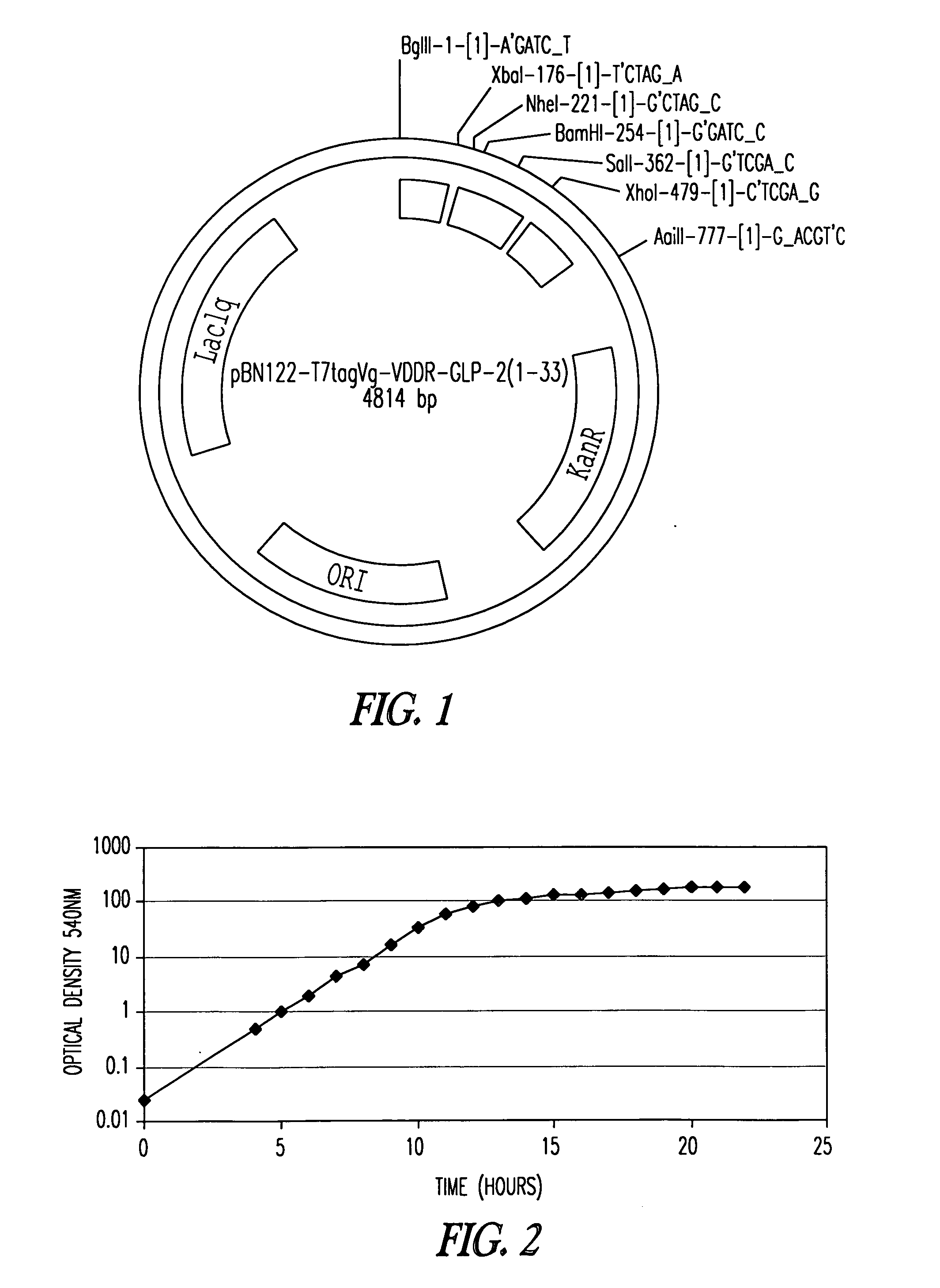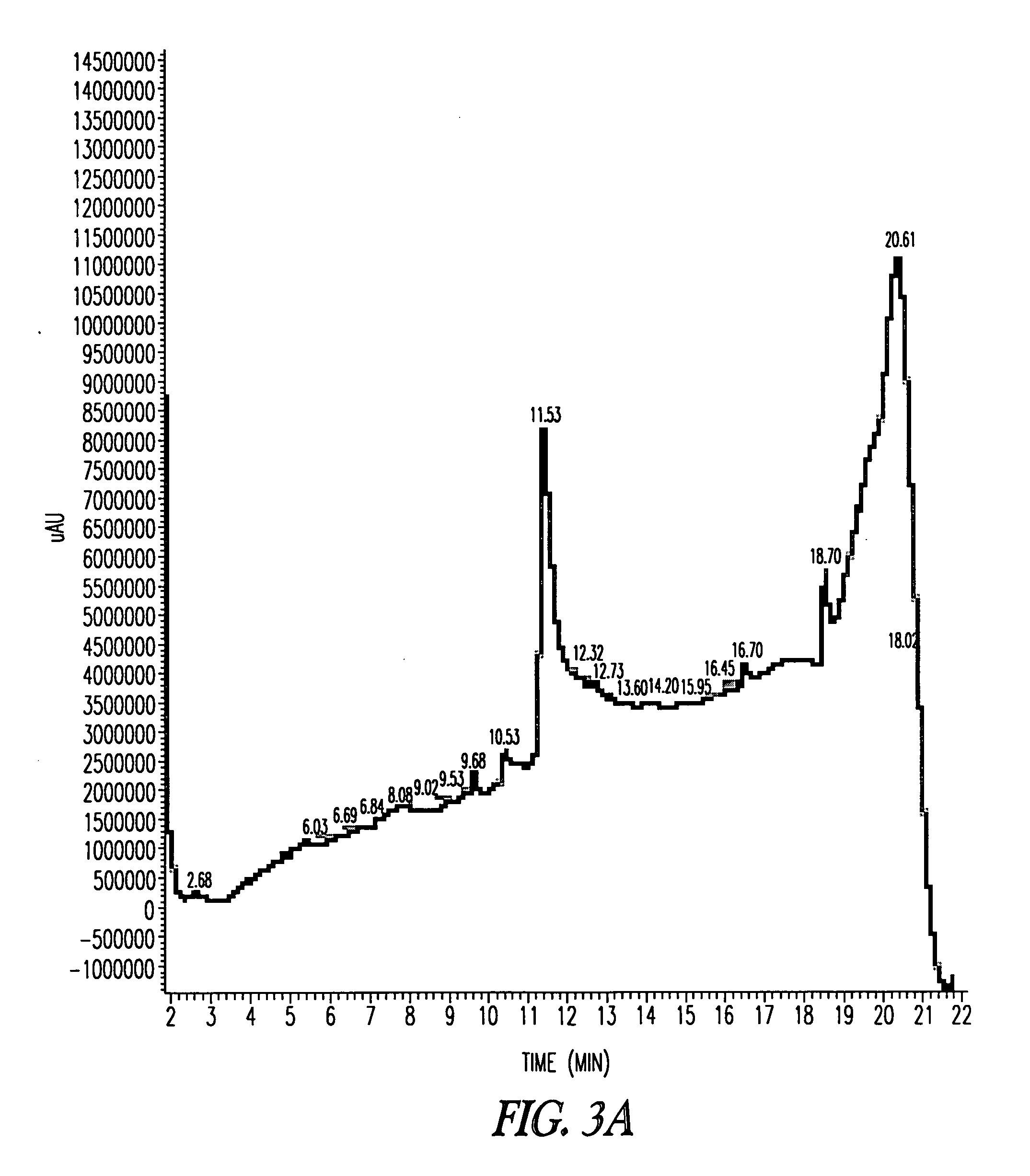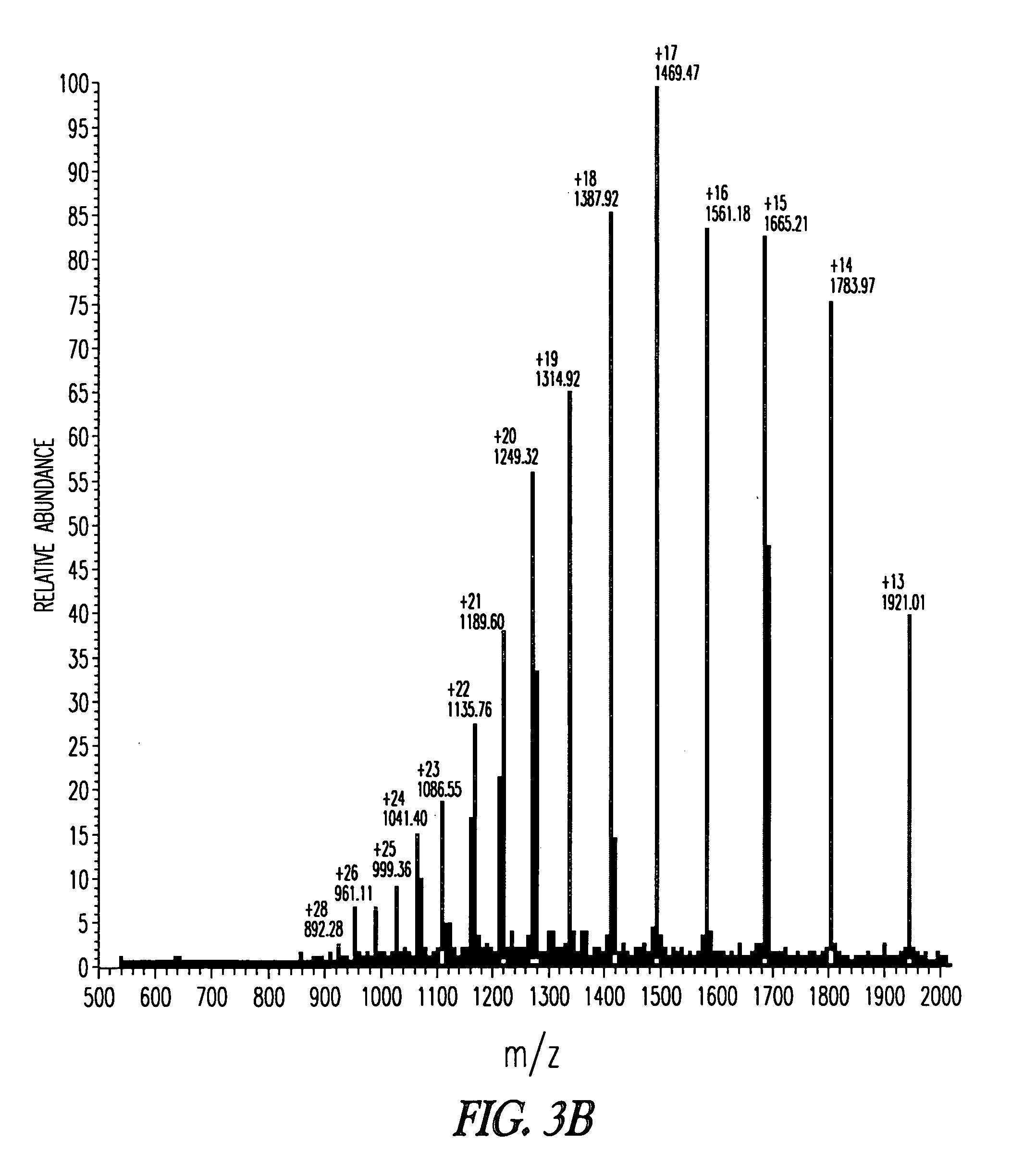Method for enzymatic production of GLP-2(1-33) and GLP-2(1-34) peptides
a technology of glp-2 and glp-2, which is applied in the direction of peptides/proteins, hormone peptides, peptides, etc., can solve the problems of complex isolation and purification of the peptide of interest, the expression of short peptides in i>escherichia coli /i>and other microbial systems can sometimes be problematic, and the fusion protein can give rise to a whole new set o
- Summary
- Abstract
- Description
- Claims
- Application Information
AI Technical Summary
Benefits of technology
Problems solved by technology
Method used
Image
Examples
example 1
Construction of Vectors that Contain DNA Which Encodes a Desired Precursor Polypeptide
[0233] In order to express a desired precursor polypeptide, an expression vector, pBN121 or pBN122, was constructed through use of PCR, restriction enzyme digestion, DNA ligation, transformation into a bacterial host, and screening procedures according to procedures described, for example, in Sambrook et al., Molecular Cloning (2nd edition). Preferably the vector contains regulatory elements that provide for high level expression -of a desired precursor polypeptide. Examples of such regulatory elements include, but are not limited to: an inducible promoter such as the chlorella virus promoter (U.S. Pat. No. 6,316,224); an origin of replication for maintaining the vector in high copy number such as a modified pMB1 promoter; a LaqIq gene for promoter suppression; an aminophosphotransferase gene for kanamycin resistance; and a GST terminator for terminating mRNA synthesis (FIGS. 1 and 1A). The pBN121...
example 2
Expression of the Precursor Polypeptide
[0236] A shaking flask was inoculated from a glycerol stock of an E. coli strain containing a pBN121 or pBN122 plasmid encoding the desired polypeptide. A complex media containing 1% tryptone was employed that was supplemented with glucose and kanamycin. The shaking culture was grown in a rotary shaker at 37° C. until the optical density was 1.5±0.5 at 540 nm. The contents of the shaking flask culture were then used to inoculate a 5 L fermentation tank containing a defined minimal media containing magnesium, calcium, phosphate and an assortment of trace metals. Glucose served as the carbon source. Kanamycin was added to maintain selection of the recombinant plasmid. During fermentation, dissolved oxygen was controlled at 40% by cascading agitation and areation with additional oxygen. A solution of ammonium hydroxide was used to control the pH at about pH 6.9.
[0237] Cell growth was monitored at 540 nm until a target optical density of between ...
example 3
Detection of Precursor Polypeptides
[0239] To monitor the production of the GLP-2(1-34) precursor polypeptide preparation, cell free extract was diluted 5-fold in 0.2 M HCl in 7.2 M urea. A sample of 15 μl was injected into a Waters Symmetry C-18 column connected to a LCM spectrophotometer. The sample was eluted with a linear gradient from 20% Buffer B (95% acetonitrile, 0.1% TFA) to 75% Buffer B over 15 minutes. The gradient was then charged from 75% B to 100% B over 1 minute. The column was then eluted with 100% Buffer B. Buffer A was 5% acetonitrile with 0.1% TFA.
[0240] The precursor polypeptide peak area is compared to the peak area from a reference polypeptide standard chromatographed under the same conditions. The precursor polypeptide concentration (FIG. 3A—Peak 1) is determined by normalizing for the different calculated molar absorptivities (ε280nm) of a standard and the precursor polypeptide, injection volumes, and dilution factors. Alternatively, the molar absorbtivity o...
PUM
| Property | Measurement | Unit |
|---|---|---|
| concentration | aaaaa | aaaaa |
| molecular weight | aaaaa | aaaaa |
| molecular weight | aaaaa | aaaaa |
Abstract
Description
Claims
Application Information
 Login to View More
Login to View More - R&D
- Intellectual Property
- Life Sciences
- Materials
- Tech Scout
- Unparalleled Data Quality
- Higher Quality Content
- 60% Fewer Hallucinations
Browse by: Latest US Patents, China's latest patents, Technical Efficacy Thesaurus, Application Domain, Technology Topic, Popular Technical Reports.
© 2025 PatSnap. All rights reserved.Legal|Privacy policy|Modern Slavery Act Transparency Statement|Sitemap|About US| Contact US: help@patsnap.com



